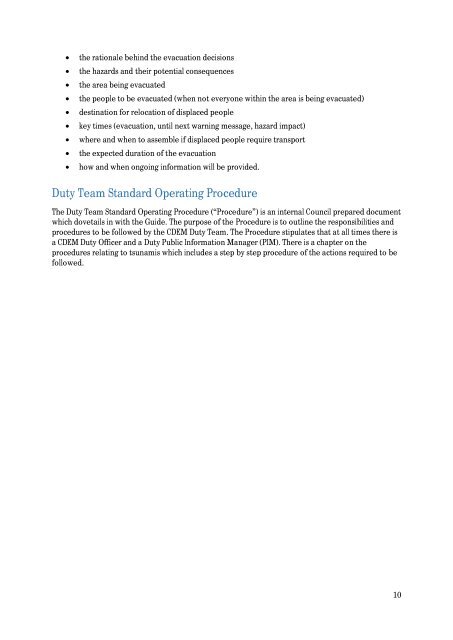Review of the Tsunami Evacuation 2017
You also want an ePaper? Increase the reach of your titles
YUMPU automatically turns print PDFs into web optimized ePapers that Google loves.
• <strong>the</strong> rationale behind <strong>the</strong> evacuation decisions<br />
• <strong>the</strong> hazards and <strong>the</strong>ir potential consequences<br />
• <strong>the</strong> area being evacuated<br />
• <strong>the</strong> people to be evacuated (when not everyone within <strong>the</strong> area is being evacuated)<br />
• destination for relocation <strong>of</strong> displaced people<br />
• key times (evacuation, until next warning message, hazard impact)<br />
• where and when to assemble if displaced people require transport<br />
• <strong>the</strong> expected duration <strong>of</strong> <strong>the</strong> evacuation<br />
• how and when ongoing information will be provided.<br />
Duty Team Standard Operating Procedure<br />
The Duty Team Standard Operating Procedure (“Procedure”) is an internal Council prepared document<br />
which dovetails in with <strong>the</strong> Guide. The purpose <strong>of</strong> <strong>the</strong> Procedure is to outline <strong>the</strong> responsibilities and<br />
procedures to be followed by <strong>the</strong> CDEM Duty Team. The Procedure stipulates that at all times <strong>the</strong>re is<br />
a CDEM Duty Officer and a Duty Public Information Manager (PIM). There is a chapter on <strong>the</strong><br />
procedures relating to tsunamis which includes a step by step procedure <strong>of</strong> <strong>the</strong> actions required to be<br />
followed.<br />
10















